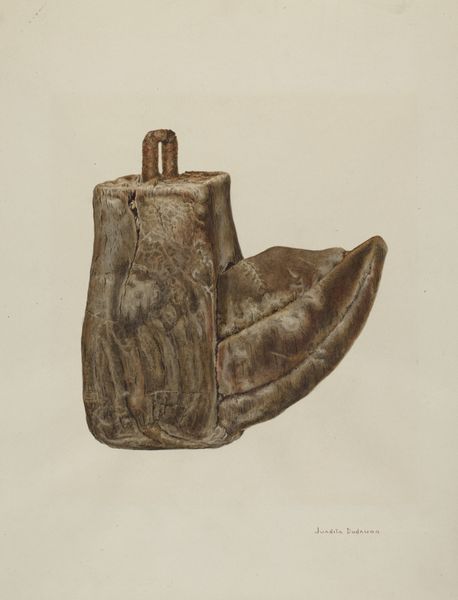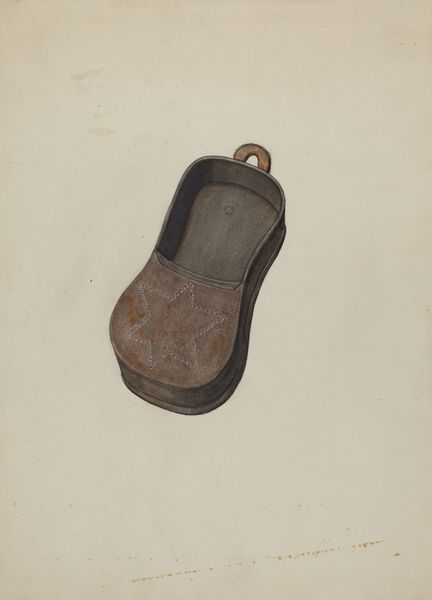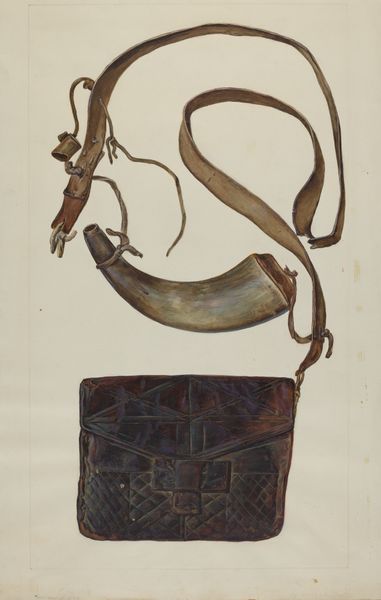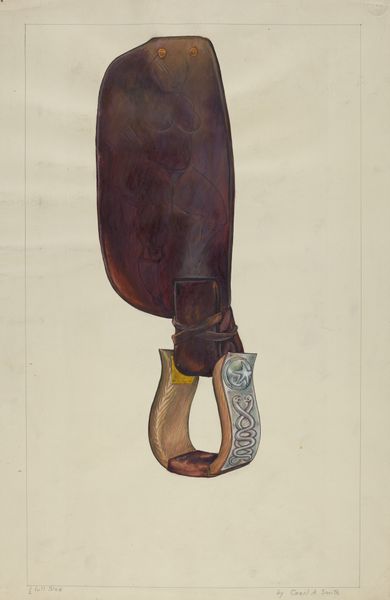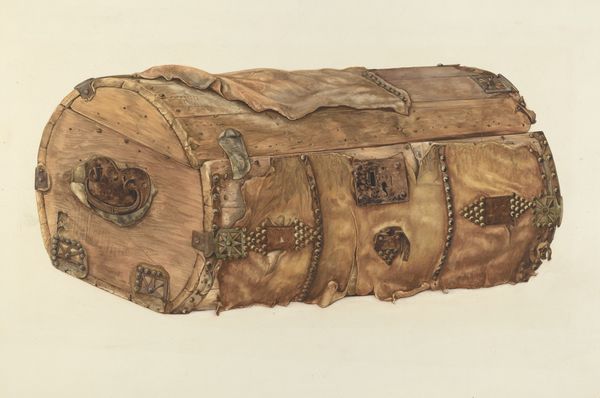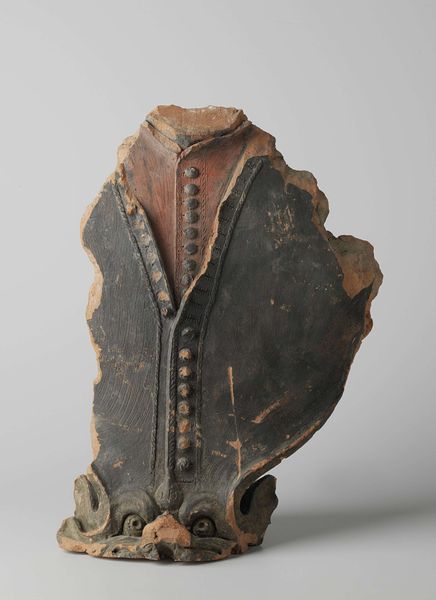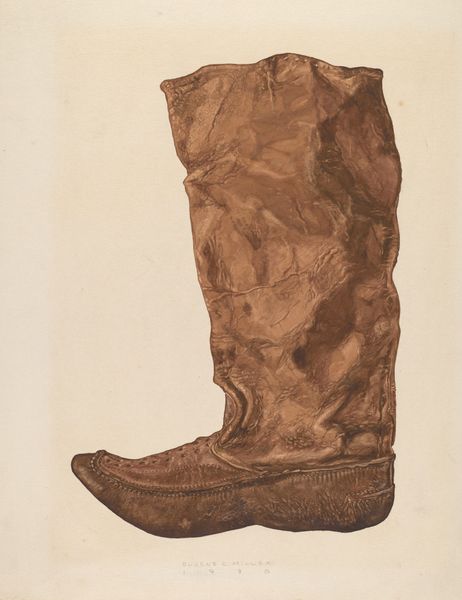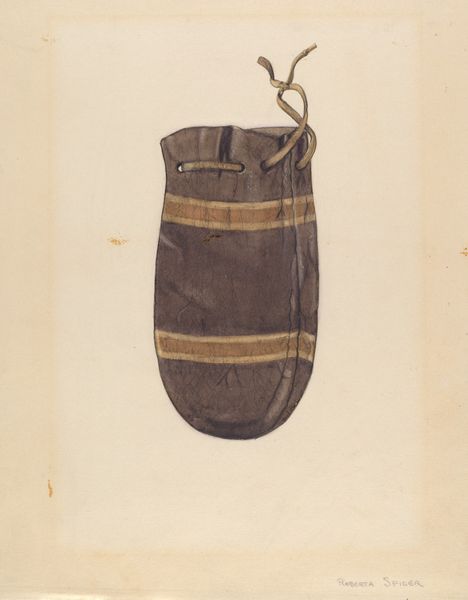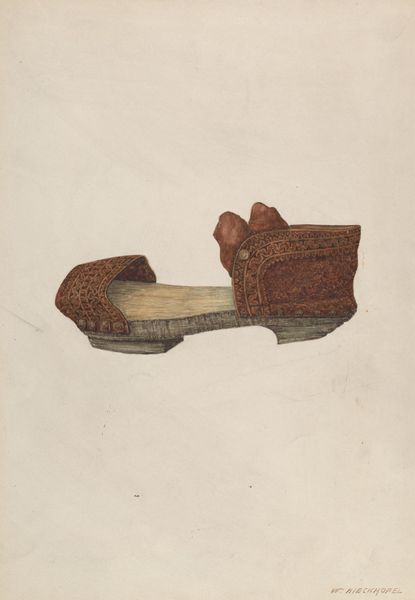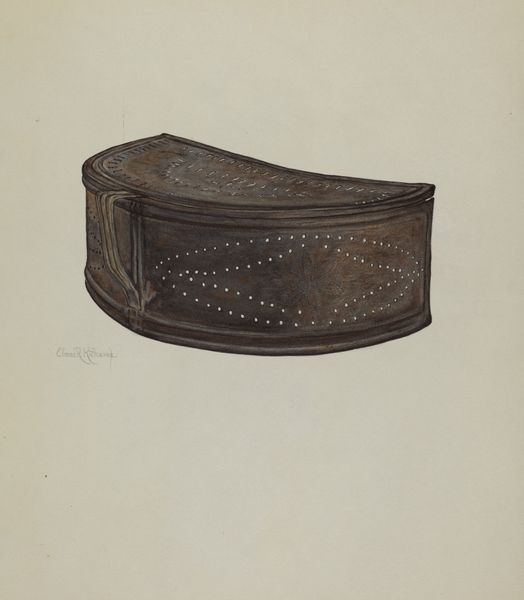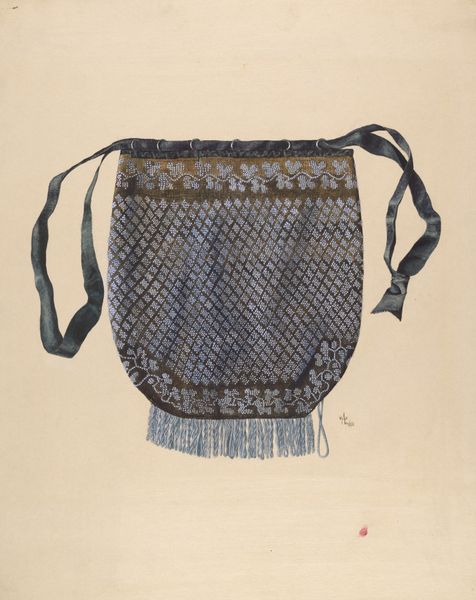
drawing, coloured-pencil, pencil, graphite, wood, charcoal
#
drawing
#
coloured-pencil
#
sculpture
#
charcoal drawing
#
pencil
#
graphite
#
wood
#
charcoal
#
charcoal
#
graphite
#
realism
Dimensions: overall: 34.1 x 22.3 cm (13 7/16 x 8 3/4 in.)
Copyright: National Gallery of Art: CC0 1.0
Editor: We are looking at Clarence Secor's "Swamp Shoe for Horse," made around 1942, a drawing using pencil and colored pencil on paper. The rendering of textures, from the worn leather to the coarse wood, is remarkable. It feels almost like a study for some larger, unrealized object. What's your take on this curious work? Curator: This image operates as more than just a representational drawing. Considering its creation during the early 1940s, it might be a statement about the practical ingenuity required during wartime scarcity. Rural life, often idealized, was also a space of resourcefulness. It reminds us that necessity drives invention, and everyday objects can reflect a culture’s resilience. Do you see a connection to the "make do and mend" ethos of the period? Editor: I hadn't thought about that specifically, but I see what you mean! The detailed realism does seem to elevate a utilitarian object to something worthy of attention and perhaps admiration. Like celebrating the overlooked, right? Curator: Precisely. The image is also compelling considering the history of how art academies at this time traditionally centered their teachings around drawing and draughtsmanship as well as life drawing classes, and this object stands outside these central motifs and thus raises questions as to which institutions, if any, Secor would have been exposed to. This "Swamp Shoe" thus becomes a kind of working-class emblem presented via traditional upper-class artistic modalities. Editor: So it’s both about rural ingenuity and perhaps also a quiet subversion of artistic conventions? It’s more complex than I initially perceived. Curator: Indeed! This interplay is what makes art history so fascinating – seeing the layers of meaning that are often hidden beneath the surface, reflective of their unique position in cultural time and place. Editor: I’ll definitely be looking at art with more historical curiosity from now on. Thanks!
Comments
No comments
Be the first to comment and join the conversation on the ultimate creative platform.

